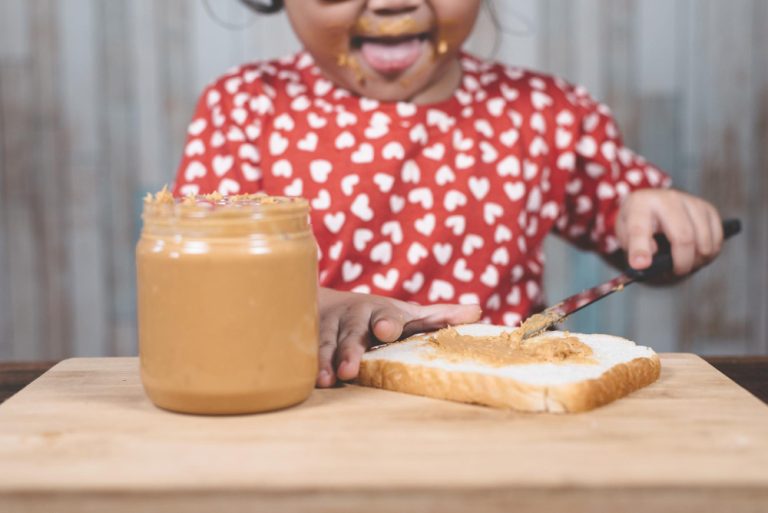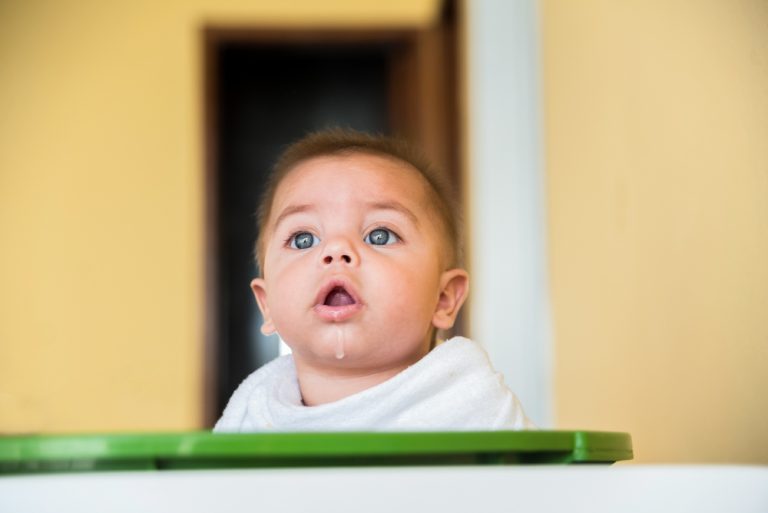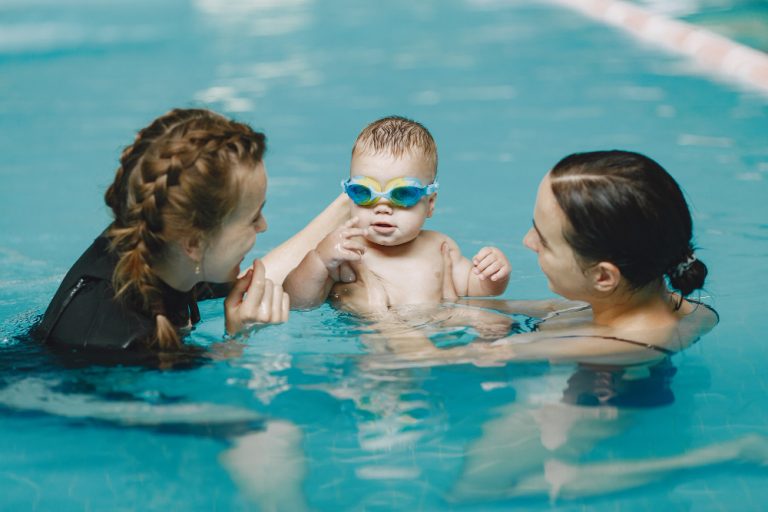When Can Babies Hold Their Own Bottle? Self-Feed Milestones
Have you ever marveled at the sight of a tiny hand grasping a milk bottle, a milestone that symbolizes independence and growth in your little one?
Holding their own bottle is a significant accomplishment for babies, marking a step towards self-reliance and fine motor skill development.
As a parent or caregiver, it’s natural to wonder when can babies hold their own bottle or when most babies reach this exciting milestone, and how you can support them in achieving it.
In this informative blog, we explore the average age at which babies start holding their own bottles and the crucial signs to watch for.
We cover everything from understanding the factors that influence this skill to tips on encouraging your baby to take this developmental leap.
Discover the joy of witnessing your baby’s increasing autonomy as they grasp their own bottle, a moment that signifies not just physical progress but also a step towards greater independence.
Stay tuned for expert advice and practical tips on nurturing this essential skill in your child.
Introduction to When Can Babies Hold Their Own Bottle
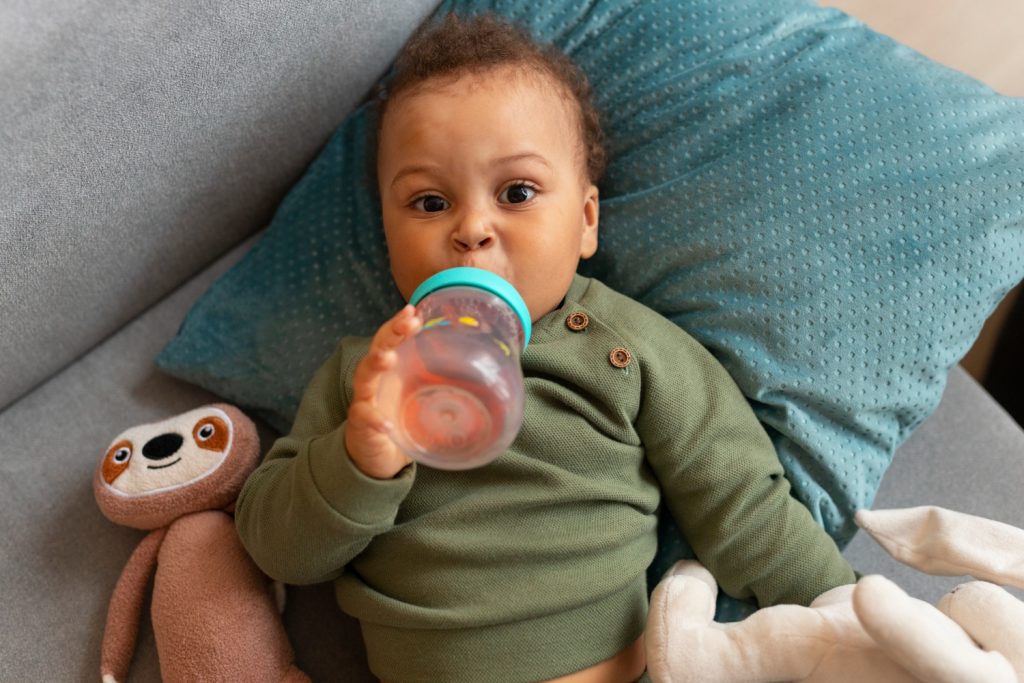
Holding their own bottle is an important developmental milestone for babies.
As they grow and develop, the ability to have their own bottle not only gives them a sense of independence but also plays a crucial role in their overall physical and cognitive development.
When babies hold their own bottle, they begin to develop their fine motor skills, hand-eye coordination, and strength in their muscles. It also provides them with an opportunity to explore and engage with their environment, promoting their sensory and cognitive development.
While the age at which babies achieve this milestone can vary, most babies start to hold their own bottle between 6 and 10 months of age. It’s important to keep in mind that every child is unique, and there may be individual differences in reaching this milestone.
In this article, we will discuss the average age at which babies develop the ability to hold their own bottle and the signs that indicate readiness. We will also explore important considerations and potential risks associated with bottle-holding. So, let’s dive in and explore this exciting milestone in a baby’s journey towards independence and development.
Signs babies are ready to hold their own bottles
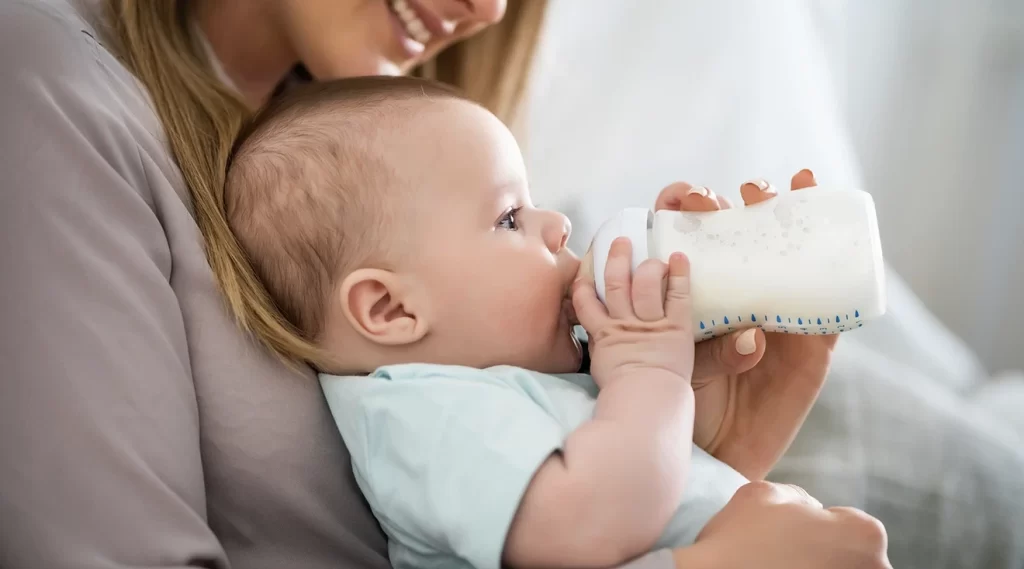
When it comes to the important milestone of holding their own bottles, babies typically show specific signs of readiness. These signs indicate their physical and developmental readiness to take on this skill. Here are some key indicators that your baby may be ready to hold their own bottle:
1. Improved hand-eye coordination
Babies will start to grasp objects with more accuracy and intention, showing better control over their hand movements.
2. Developing fine motor skills
As babies gain more control over their fingers and hands, they will be able to manipulate objects, including holding their own bottle.
3. Increased muscle strength
Babies need enough strength in their arms and hands to hold and manipulate the weight of their bottle.
4. Sitting up independently
Sitting without support is an important milestone that indicates a baby has developed the necessary core and upper body strength to hold their own bottle.
5. Showing interest in self-feeding
Babies may reach for the bottle or show eagerness to hold it while feeding, expressing their desire for independence.
It’s important to note that every baby develops at their own pace, so the specific timing can vary. Patience and encouragement are key as you support your baby’s journey toward holding their own bottle.
Grasping and Hand-Eye Coordination: The Key to Bottle Holding

The development of grasping and hand-eye coordination skills plays a crucial role in a baby’s ability to hold their own bottle. As babies grow, they begin to refine their ability to grasp objects and coordinate their hands with their eyes. This development paves the way for them to hold a bottle independently.
- Grasping is the act of holding an object between the fingers and the palm, and it becomes more controlled and intentional as a baby’s fine motor skills improve.
- Hand-eye coordination allows babies to align their hand movements with what they see, enabling them to find and grab the bottle effectively.
Encouraging activities that promote fine motor skills, such as offering age-appropriate toys and objects to grasp, can support the development of grasping and hand-eye coordination. With practice and time, babies will gain the necessary control over their hands to hold their own bottle confidently.
Sitting up
One important milestone before babies can hold their own bottle is the ability to sit up independently. Sitting upright provides the necessary stability and control for them to hold and manipulate objects, including their bottle.
Here’s why sitting up is crucial:
Develops core strength and stability
- Sitting up requires babies to engage their core muscles, building strength and stability in their torso.
- As they strengthen their core, they gain better control over their movements, making it easier to hold and handle objects like a bottle.
Enhances hand-eye coordination
- Sitting up allows babies to have a better view of their surroundings, which helps develop their hand-eye coordination.
- They can now observe and reach for their bottle with more precision, refining their fine motor skills.
Promotes independence and self-feeding skills
- When babies can sit up unsupported, it signifies a level of independence in their development.
- Holding their bottle themselves fosters a sense of accomplishment and encourages self-feeding skills, empowering them to take control of their feeding experience.
To support your baby in reaching this milestone, create a safe and supportive environment. Use a sturdy high chair that provides proper back and neck support. Remember, always supervise your baby during feeding time to ensure their safety and avoid potential choking hazards.
By prioritizing their ability to sit up, you can pave the way for your baby to confidently hold their own bottle and embark on their journey towards self-feeding.
Can I Prop My Baby’s Bottle?
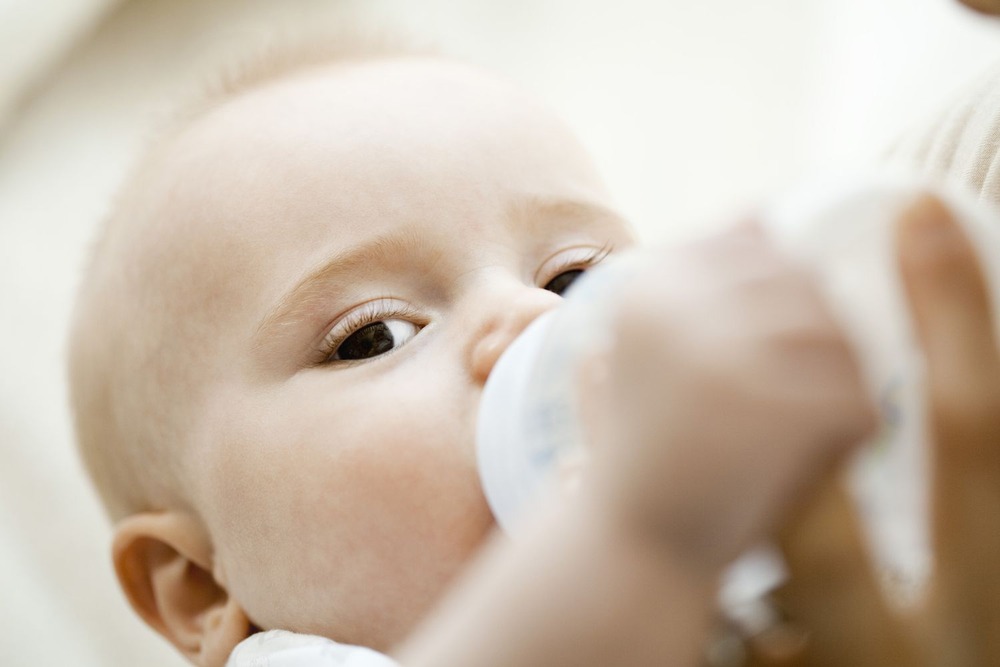
Propping a baby’s bottle may seem convenient, but it comes with potential risks and dangers that should be avoided. It is important to understand the implications before considering this practice.
Here are some key points to consider:
Increased Risk of Ear Infections
- Propping a bottle can cause milk or formula to pool around the baby’s mouth and increase the risk of ear infections.
- When a baby lies down with a propped bottle, the liquid can flow back into the
- Eustachian tubes, creating a breeding ground for bacteria.
Tooth Damage
- Prolonged bottle propping can lead to tooth decay and dental problems.
- The constant exposure to sugary liquids from the bottle can cause cavities and damage the baby’s emerging teeth.
Choking and Suffocation Hazards
- Unsupervised bottle propping poses a choking and suffocation hazard.
- Babies may pull the bottle’s nipple too far into their mouths, causing them to gag or choke on the excess liquid.
- Additionally, propped bottles can accidentally cover a baby’s face, increasing the risk of suffocation.
It is important to provide your baby with a safe feeding environment by holding the bottle yourself or sitting in close proximity while they hold it. This allows for proper supervision and minimizes potential risks.
Ear infections

When it comes to propping a bottle for your baby, there are potential risks to consider. One of the dangers is an increased risk of ear infections. When a bottle is propped, it can cause the milk or formula to pool around the baby’s Eustachian tubes, which connect the middle ear to the back of the throat. This stagnant liquid can create a breeding ground for bacteria, leading to infections.
According to experts, the natural flow of milk during breastfeeding or bottle feeding while holding the baby upright helps prevent the accumulation of fluids in the Eustachian tubes. When a baby is propped up with a bottle, the normal flow is disrupted, increasing the risk of infection.
It is important to keep in mind that ear infections can be painful and cause discomfort for your little one. To minimize the risk, it is best to avoid propping the bottle and instead hold your baby during feedings to ensure proper positioning and a healthy feeding experience.
Remember, your baby’s health and well-being should always be a top priority, so it’s important to be mindful of the potential risks associated with bottle propping.
Tooth damage
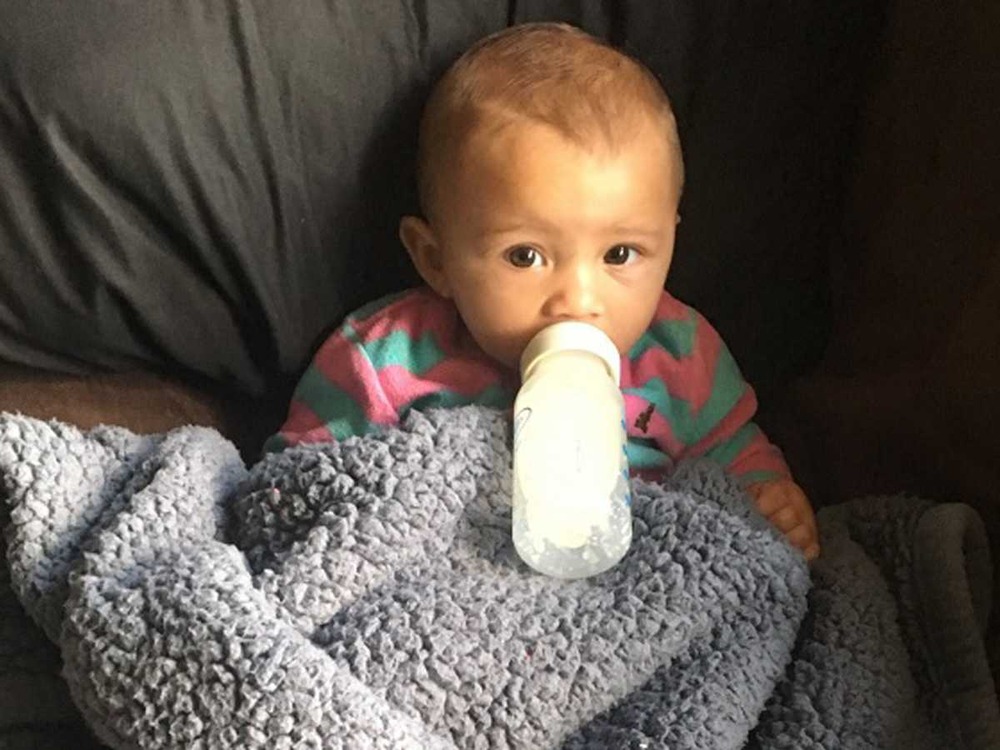
One of the potential risks associated with prolonged bottle propping is tooth damage. When babies hold their own bottle, there is a risk of the liquid pooling in their mouth, especially if they fall asleep while drinking. This prolonged exposure to sugary substances, such as formula or milk, can lead to tooth decay and the development of cavities.
- The constant presence of a bottle in a baby’s mouth can also negatively impact the proper alignment and development of their teeth.
- The pressure from the bottle and the way it rests against the teeth can cause misalignment, known as malocclusion.
- This can lead to issues with biting, chewing, and even speech development later on.
To minimize the risk of tooth damage, it is important to actively supervise your baby while they are drinking from a bottle and avoid propping the bottle for prolonged periods.
Additionally, encourage good oral hygiene practices by gently wiping your baby’s gums and teeth with a clean cloth or soft toothbrush, even before teeth appear.
Remember, maintaining healthy teeth is crucial for your baby’s overall well-being and proper oral development.
Choking and Suffocation: A Serious Risk

When it comes to unsupervised bottle propping, there are significant dangers of choking and suffocation that parents should be aware of. Propping a bottle can cause the milk to flow too quickly, increasing the risk of choking.
If a baby’s airway becomes blocked, it can lead to suffocation, a life-threatening situation. Additionally, the position of an unsupported bottle can put pressure on a baby’s face, hindering their ability to breathe properly.
To ensure your baby’s safety, it’s crucial to always be present and attentive during feeding time. Avoid propping the bottle and instead maintain a hands-on approach, holding the bottle and monitoring your baby’s feeding. Remember, nothing is more important than your little one’s well-being.
1. Encourage practice
- Offer opportunities for your baby to practice holding their bottle during feeding times.
- Place your baby’s hands on the bottle with gentle support, allowing them to explore and grasp it.
2. Promote hand-eye coordination
- Engage your baby in activities that promote hand-eye coordination, such as playing with toys that require grasping or holding objects.
- This can help strengthen their motor skills and aid in holding their bottle.
3. Use a supportive feeding position
- Opt for a feeding position that supports your baby in holding the bottle, such as semi-reclined in a high chair or supported by pillows.
- This can provide some additional stability and comfort.
4. Try alternative feeding methods
- If your baby is struggling with holding a bottle, you can explore alternative feeding methods like using a sippy cup or introducing solid foods when appropriate.
- Consult with your pediatrician for guidance.
Remember, each baby has their own unique timeline for achieving milestones. Be patient and supportive, providing opportunities for your baby to develop the necessary motor skills. With time and practice, they will likely gain the ability to hold their own bottle.
When to switch from a bottle to a sippy cup
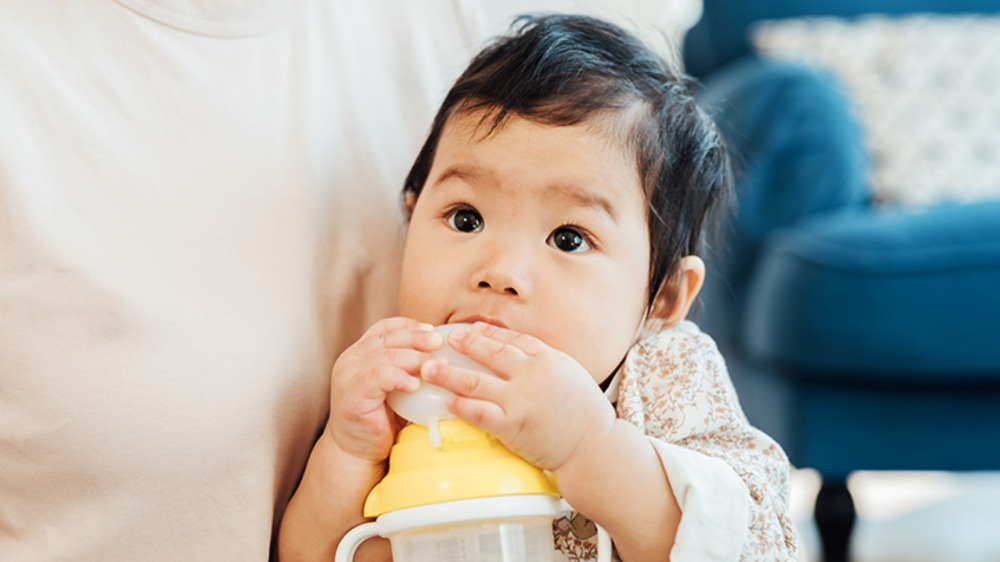
Transitioning from a baby bottle to a sippy cup is an important step in a child’s development. While the timing may vary for each child, there are some general guidelines to consider. Most pediatricians recommend introducing a sippy cup around six to nine months of age. This is typically when babies start sitting up independently and have better control of their motor skills.
Here are some signs that indicate your child may be ready to switch from a bottle to a sippy cup:
1. Motor skills development
Your baby should have sufficient hand-eye coordination and grasping abilities to hold and maneuver a sippy cup.
2. Independent sitting
It’s important for your baby to be able to sit up without support to safely drink from a sippy cup.
3. Showing interest
If your child is consistently reaching for your cup or showing curiosity about what you’re drinking, it may be a good time to introduce the sippy cup.
4. Introducing solids
As you begin introducing solid foods to your baby’s diet, transitioning to a sippy cup for liquids can help encourage self-feeding and independence.
Remember, every child is different, so trust your instincts and consult with your pediatrician for personalized advice. When introducing a sippy cup, start with small amounts of water or breast milk, and gradually transition to other liquids as your child becomes more comfortable.
Making the switch to a sippy cup is an exciting milestone that promotes oral motor skills development and independence. It’s important to make the transition gradually and offer plenty of encouragement and support along the way.
The Final Note: When Can Babies Hold Their Own Bottle
In conclusion, it’s essential to prioritize your baby’s safety and well-being when considering whether to leave them alone with a bottle. While the milestone of holding their own bottle is an exciting stage in their development, it’s crucial to remember that adult supervision during feeding times is still paramount.
By being present, you can ensure your baby’s safety, promote bonding, and create positive feeding experiences that contribute to their overall well-being. Remember, every baby develops at their own pace, and the skill of holding a bottle will come in time. Your patience and support are invaluable during this journey.
If you’re wondering “when can babies hold their own bottle,” remember that it varies for each child and follows its natural course. Welcome and enjoy every step of this remarkable journey with your little one.



